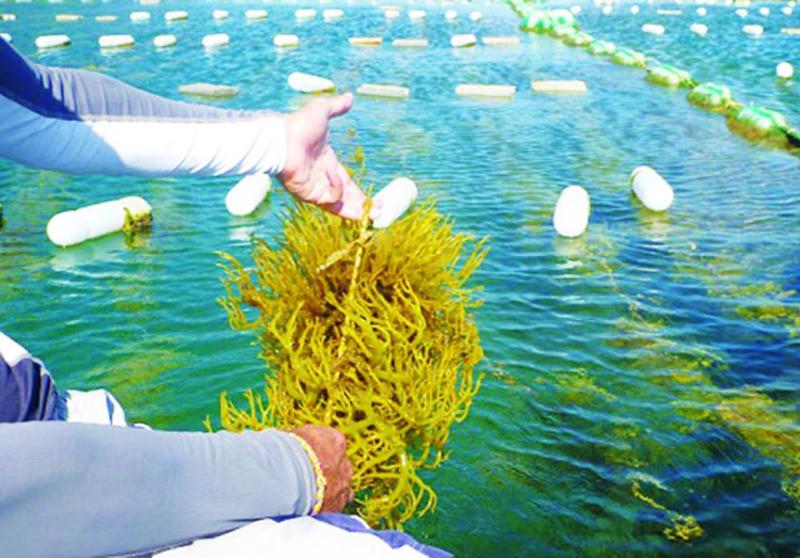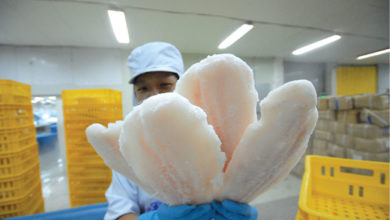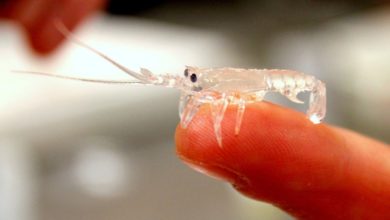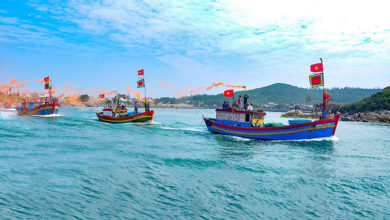Vietnam’s seaweed under threat: Quang Ngai tackles destructive harvesting practices
Quang Ngai province, home to some of Vietnam’s richest natural seaweed beds, is now confronting a serious environmental threat: the unsustainable and excessive harvesting of Sargassum seaweed, which is damaging marine ecosystems and depleting critical fish habitats.
Stretching along the coastal communes of Binh Thuan, Binh Tri, Binh Hai, and Binh Chau in Binh Son District, these seaweed beds serve as vital marine nurseries and underwater forests, helping to mitigate the effects of climate change. But their ecological importance is increasingly jeopardized by aggressive harvesting practices.
For years, local fishermen have relied on seaweed for income. “My wife and I start harvesting at 5 a.m. and return by 9 a.m. with a full raft,” said Nguyen Hoang, a fisherman in Binh Chau commune. “We can collect 100 to 150 kg of dried seaweed a day, enough to cover our basic living expenses.”

However, harvesting during the seaweed’s reproductive season and without regard for sustainability is eroding the ecosystem’s resilience. Such practices eliminate spawning grounds for marine species and threaten long-term biodiversity.
To address the crisis, a technical support project titled “Protection, Harvesting, and Development of Sargassum in Coastal Communes of Binh Son Linked to Sustainable Livelihoods” was launched in September 2024. Funded by the Global Environment Facility’s Small Grants Programme and implemented in partnership with the United Nations Development Programme (UNDP), the initiative has a total budget of over VND 2 billion (approximately USD 80,000), with nearly 60% provided by the global fund.
The Binh Son Farmers’ Union is leading project implementation. Its objectives are to raise public awareness of the ecological role of Sargassum, promote biodiversity, rebuild marine resources, and enhance the climate resilience of coastal communities.
The project also supports the development of sustainable livelihood models tied to seaweed harvesting, introduces co-management mechanisms for marine resource protection, and demarcates seaweed conservation zones. The program covers over 250 hectares of natural seaweed in the coastal communes of Binh Thuan, Binh Tri, Binh Hai, and Binh Chau.
Recently, the project management team conducted a field survey to assess the reproductive cycles of Sargassum and associated marine species. This research will inform an annual harvesting calendar and contribute to the zoning and mapping of protected areas.
A second survey is planned to evaluate seaweed quality and provide technical training to improve product value for participating households. “The findings will guide our strategy to sustainably develop Sargassum, balancing economic benefits with ecosystem conservation,” said Dr. Lam Ngoc Tuan, a project specialist.
More than just a source of income, Sargassum plays a crucial role in climate adaptation and marine protection. By curbing destructive harvesting and promoting sustainable practices, the project seeks to preserve biodiversity while securing long-term livelihoods for local communities.
“We’re committed to raising awareness and helping people harvest seaweed responsibly,” said Huynh Thanh Hieu, Vice Chairman of Binh Thuan Commune. “This is about protecting the ocean and ensuring a sustainable future for everyone.”
VFM






